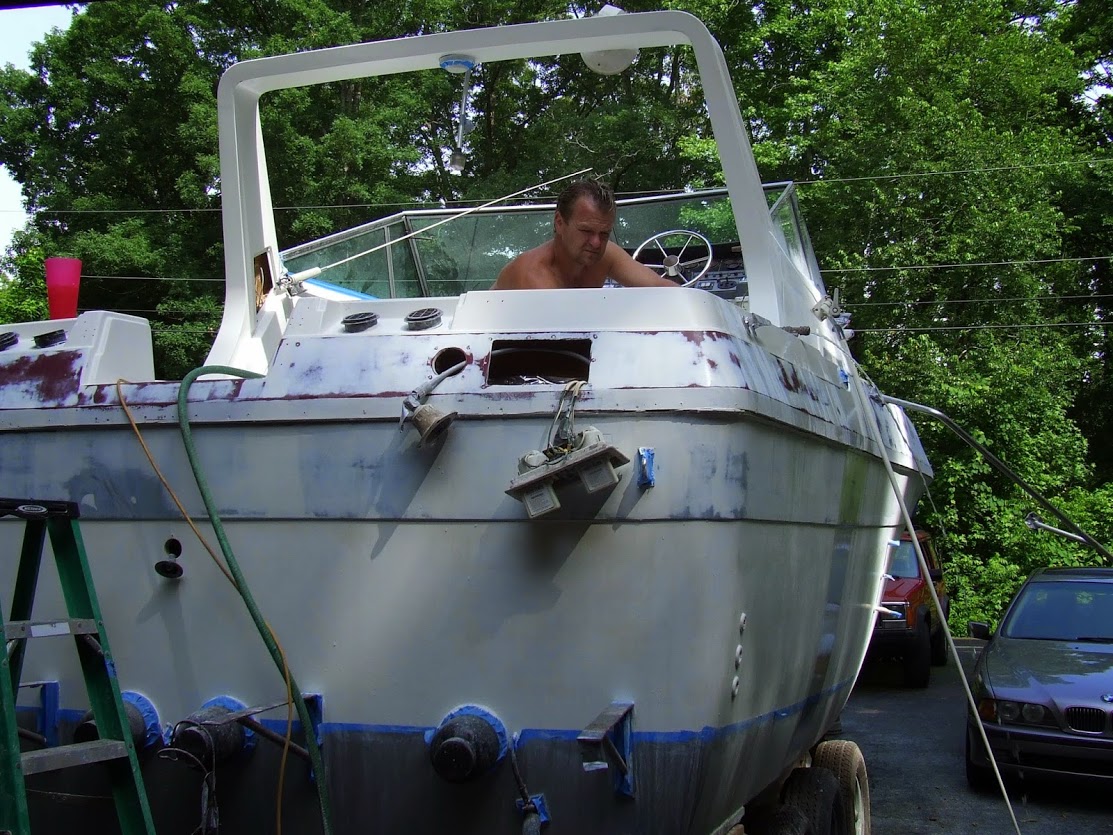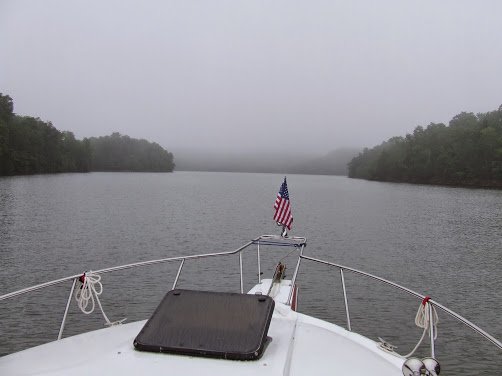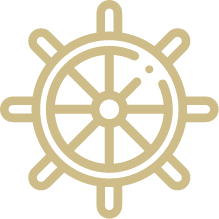
- Blog
-
by Pete Green
Tim Griffin has been involved in boating for well over 30 years. He has spent a lot of his time on various freshwater lakes and rivers, from running the Chattahoochee River in Georgia to jumping sandbars in Alaska. He says that he has slowed down a bit now and enjoys the pleasures of sitting at anchor and watching the sun go down.

We are very lucky to have an exclusive interview with Tim. He is a wealth of knowledge and has been an inspiration to many other enthusiasts not least through his excellent website http://www.boatinghowto.com/
Pete: Hi Tim. It’s great to be able to interview you. I run a Yacht Delivery company in the UK and have always been passionate about boating and sailing. Through my work I have sailed many of the oceans and seas, but the very nature of yacht delivery is that you set off from port and spend a lot of time offshore. The inland rivers and lakes of Northern America seem vast in variety and size. It has long been a dream of mine to canoe the Yukon or sail in the Great Lakes, meander down the Mississippi or blast through the everglades. Please tell me more about the boating you have done over the last 30 or so years?
Tim: Hi Pete, first off thanks for sharing your adventures with our readers as well. We have a very diverse membership spanning the globe from Blue Water Sailors to River Runners and we all learn from each other. My personal boating adventures began at around 14 yrs of age. One of my buddies and I found an old beat up fiberglass jon boat sitting abandoned on a small pond near our homes. We inquired among all of the neighbors and found it was indeed abandoned much to our delight. The old thing had a few holes in it and was pretty badly cracked, but for two young boys this was the perfect summertime project. We started our trial runs on the pond and managed to patch a few holes the materials we had available (a young sapling trimmed to plug the holes). Once we determined that she would indeed float, albeit with a lot of bailing we began to move her to the big water. Our big water turned out to be a 400 acre reservoir located about 5 miles away across a few country roads and through the woods. This took a while but we were successful after several days of tugging and pulling. I still remember the first launch on the reservoir using old 1 by 4 planks as paddles. The old boat served us well from fishing to duck hunting and the occasional pirate adventure. I like to think the old boat is still out there somewhere, still kindling the dreams for some young children like it did for me. I know this old boat is where my love of the water began.
As I grew older we eventually moved away from the reservoir and ended up close to one of the largest rivers in Georgia, the “Chattahoochee” or “The Hooch” as known by locals. At this time I acquired a 12 aluminum jon boat with a 4 hp Evinrude. This proved to be the perfect river boat to explore the banks of the Hooch and proved the demise of many a catfish. This was my first introduction to safety although still a young invincible fellow I learned about currents, eddies and the need to try to remain upriver from the launch point in case of equipment failure which was quite common.
In my late teens I moved on to ski boats since I realized they were the perfect tool to attract the scantily clad opposite sex. We spent summer weekends on old tractor inner tubes and water skis plying some of the larger reservoirs in Georgia. This was my first experience with life jackets not from a concern of safety (since I was still invincible) but instead due to regulations and the avoidance of a ticket from the numerous rangers patrolling the lake. This experience did provide the first realization that I was responsible for the safety and well-being of my passengers since I was at the helm.
In 1987 I joined the Air Force and was stationed in Alaska, the perfect assignment for someone that loves the outdoors. I began my Alaska adventure with a Scanoe which is a canoe with a true stern on one end. This proved to be a very good match for some of the smaller streams and rivers since it was very maneuverable and you could easily mount a motor. This proved to be my main source of transportation for about 2 years of hunting and fishing until I formed a new friendship with the owner of a jet boat. This boat allowed us to reach far more remote places. Similar to blue water travel, the remoteness quickly demonstrated the importance of maintaining the equipment to the highest level possible and to be totally self-sufficient, help could be many days away if it was available at all. I also spent a bit of time on the Gulf of Alaska fishing for halibut with another close friend. This was truly my first experience on rough water with my hands on the helm. The coast of Alaska is quite rugged and has pretty intense tidal currents. Couple this with the winds rolling off the mountains and things can get pretty exciting really fast.
In 2007 I found myself living near Memphis, Tennessee and about an hour and a half from the Tennessee River. Although Memphis is situated alongside the Mississippi River, the water is generally quite dirty and not the prime spot for recreational boating. In order to quickly get back on the water, I obtained an old Sea Ray runabout from my father and after a motor rebuild and some upholstery work I found myself back on the water. For those not familiar, the Tennessee River begins near Knoxville, Tennessee flowing through several states until it spills into the Ohio River and eventually feeds the Mississippi River. It also has the Tennessee Tombigbee Waterway which is a canal that connects PickwickLake to the Gulf of Mexico at Mobile, Alabama. It is a great place for boating and in reverse of the old saying, “you can’t get there from here” well you really can get there from here on the Tennessee River with a large enough pocket book.
After one year with the Sea Ray, we decided to move to a larger boat and so the search began. I purchased a salvage 1986 Cruisers Elegante 297 and began work restoring the boat. Fortunately the engines were still in good shape but the rest of the boat was in severe need of repair and upgrading. Over a period of 5 months we transformed the old girl into a fully capable all weather live aboard cruiser. When finished she ended up with new upholstery, new camper canvas, new head, added a generator and in the end contained a new Raymarine moving map, sonar and digital radar.

Pete: So was it your own restoration project that inspired your website?
Tim: Yes, definitely! It was during this rebuild project that I discovered a need for a community where folks involved in similar boating projects could interact with other boaters. I envisioned a forum where they could share their projects, seek advice as needed, provide help to others and learn more about boating and safety in general.
Pete: I understand that you are also a member of the United States Power Squadrons?
Tim: Yes, our Elegante 297 also prompted Penney and I to join. The group promotes boater safety and education and offers numerous classes from basic boating to celestial navigation. We became very involved with this organization from the beginning and I have held many of the officer positions to include Commander. I have also enjoyed many of the educational classes which both increased my knowledge and safety awareness to add to my skills. As they say, you are never too old to learn!

Pete: How much time are you currently spending on the water?
Tim: Penney and I now average about 150 days a year on the water since this portion of the United States provides a long warm season and relatively mild winters.

Pete: I assume that the inland waterways are fairly safe and sheltered. Have you ever had any troubles?
Tim: Even though it is an inland river, many of it’s lakes are large enough to support some pretty rough water during and after a large thunderstorms. Fortunately, unlike the ocean we do have many coves to seek shelter in and avoid the worst of it but I have still taken water over the bow on occasion as things heated up. One early summer afternoon after a squall line passed through Penney and I responded to hails on the emergency channel of boats sinking. We quickly pulled anchor and moved out to assist. With life jackets donned we rounded the point to find two boats upside down with a lengthening debris field scattered downwind. This portion of the lake provided a fetch of approximately 5 miles for the waves to build and take their toll. Unfortunately, that squall line claimed three boats and one life as it passed through that day bringing 50 kt winds to bear.
Pete: That’s terrible and certainly an example of why safety is so important! So what’s next for you? Are you looking for another restoration project?
Tim: Yes we will soon be moving to something larger as we seek more of the creature comforts of home. A 30 foot cruiser can become quite cramped after a few days on the water and so far our longest stay has been 6 days. We hope to move up to something in the 50 foot range so we can eventually take it to the Gulf of Mexico, we also plan to travel the Great Loop here in the US. That trip will take a while since you virtually circle the eastern half of the US. One of the reasons why we enjoy your videos so much is that both Penney and I want to experience blue water sailing. I have been learning to sail and we do share the dream of a possible circumnavigation in the future.

Along with that we hope to continue expanding the website with more articles especially safety related. In the past Safety has typically been a dry and boring topic and the average person loses interest after reading just a few paragraphs. Here in the US formal training is not required for adults to operate a watercraft, most tend to drive a boat like a car and have the same mindset. However, You and I both know how important it is to always have several backup plans the moment that boat leaves the shore whether you are just cruising across the lake or traveling the open ocean. We hope to help change that thought process!

Pete: That’s an interesting point that you raise about training. Do you think licensing and regulation should be stricter in the world of boating?
Tim: From my perspective I hesitate to get the government more involved in our everyday lives. They are full of good intentions but normally end up with regulations that have pretty bad unintended consequences in the end. With that being said I think it would benefit everyone if there were a requirement to have completed a certain level of training and education prior to be allowed to operate a watercraft. I have reviewed many of the current boater safety classes and feel that although they cover many of the aspects of safety, they are inadequate in addressing the thought process of being a Captain. To be more specific, how to think defensively! Many people may think the word Captain is a bit too strong, but even if you are on a personal watercraft, you are the Captain of that vessel and a certain degree of responsibility ensues.
Pete: Do you have any other advice for anyone out there who is looking to get into boating as a hobby?
Tim: Start with a big bank account (Ha Ha!). I would encourage anyone interested to become a member of the boating community. Boating offers some of the best recreational opportunities available and does not have to be expensive. I would also strongly encourage them to become a member of one of the many boating education and safety organizations around the world. These organizations tend to provide a wealth of knowledge to help keep you safe with their educational classes and safety material. For the first time boater I would recommend participating in some on the water training as well. Whether through one of the above mentioned organizations or by simply hiring a licensed Captain for the day so much can be learned from hands on operation and demonstration.

Halcyon Yachts Ltd is a dedicated international yacht delivery specialist with highly experienced and qualified crew. For more information or to see details of their recent deliveries please visit www.halcyonyachts.com/



